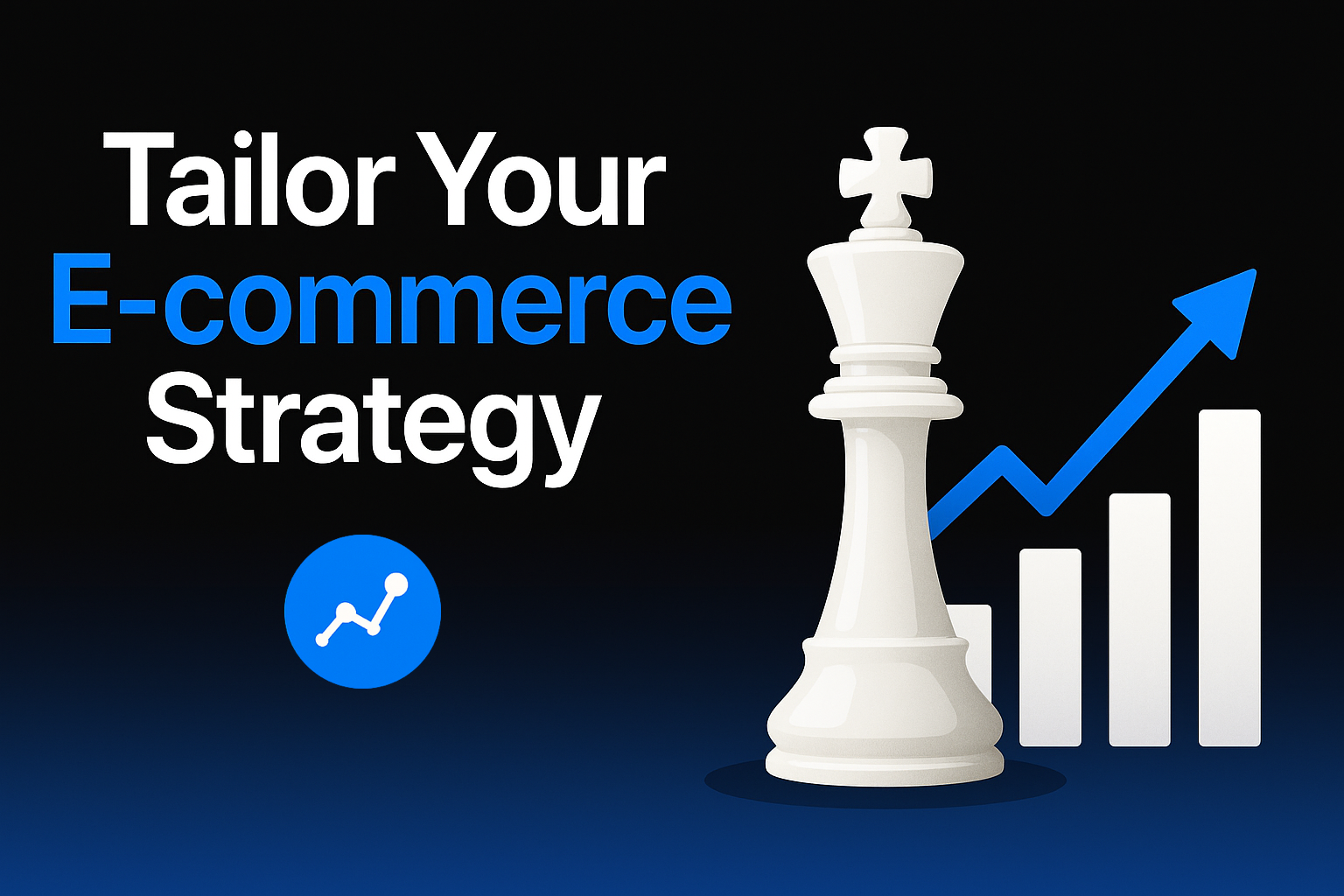How the Latest Mobile Commerce Trends Impact Your E-commerce Store
The mobile commerce landscape is constantly evolving, and retailers who want to succeed in the digital era must stay up-to-date with the latest trends. As more customers shop on mobile devices, having a robust mobile commerce strategy becomes crucial for online stores.
In this article, we'll explore the latest trends in mobile commerce and their impact on e-commerce stores. From mobile optimization to leveraging artificial intelligence and machine learning, we'll examine how retailers can stay ahead of the competition and increase sales in the dynamic world of mobile commerce.
Whether you're just starting your e-commerce journey or you're an experienced online retailer, this article will provide you with valuable insights into the latest mobile commerce trends and how you can use them to take your online store to the next level. Let's begin!

What is the Mobile Commerce Trend?
Mobile commerce, often referred to as m-commerce, involves buying and selling products or services via mobile devices such as smartphones or tablets. The mobile commerce trend has significantly grown in recent years due to the widespread adoption of mobile devices and the convenience they offer to consumers.
As more people use mobile devices for online shopping, businesses are investing in mobile-optimized websites and applications to meet the growing demand. Mobile commerce is expected to continue gaining popularity as technology advances and more people appreciate the convenience of shopping anytime, anywhere.
Why Are Mobile Commerce Trends Important for Your Business?
Mobile commerce trends are important for your business because they allow you to reach customers where they spend most of their time – on their mobile devices.
By optimizing your online presence for mobile devices, you can increase visibility, reach a broader audience, and provide a more convenient shopping experience for your customers. This can lead to increased sales, customer loyalty, and brand awareness.
Furthermore, mobile commerce trends are driving innovation in areas such as mobile payments, personalized shopping experiences, and real-time customer service. By embracing these trends, you can stay ahead of the competition, improve customer experiences, and remain relevant in a rapidly changing retail landscape.
In summary, mobile commerce trends are important for businesses because they enable customer reach, drive innovation, and improve the overall customer experience.
Mobile Commerce Trends to Pay Attention To
1. Mobile Optimization
In 2025, mobile optimization is becoming increasingly important. As more consumers shop online using mobile devices, retailers must ensure that their websites and apps are mobile-friendly.
This includes ensuring that the site is easy to navigate on a smaller screen, pages load quickly, and the checkout process is smooth and easy to use.
Mobile optimization is crucial for providing a positive customer experience and increasing conversion rates. Additionally, search engines prioritize mobile-optimized websites in search results, making mobile optimization even more important for online retailers who want to effectively reach their target audience.
2. Personalized Experiences
In 2025, personalized experiences are becoming increasingly popular. Today's consumers expect a tailored and personalized shopping experience, and online retailers are responding by leveraging data and technology to provide it.
Personalized experiences can be created in many ways, including personalized product recommendations based on browsing and purchase history, targeted email and marketing campaigns, and customized product content and images.
Retailers can also use AI and machine learning algorithms to analyze customer data and provide personalized experiences in real-time, such as dynamic pricing and real-time customer service through chatbots.
In summary, personalized experiences are becoming an increasingly important aspect of mobile commerce, and retailers who invest in this area are likely to see increased engagement, customer satisfaction, and sales.
To stay ahead of the competition and meet the changing needs of their customers, retailers should prioritize personalization in their e-commerce strategy.
How to Increase Sales by Providing Personalized Experiences
Personalization is a significant component of mobile commerce. By leveraging customer data and technology, retailers can provide a personalized shopping experience that meets the unique needs and preferences of each customer.
This includes making relevant product recommendations based on a customer's purchase history, sending targeted promotions based on their location or browsing behavior, and other activities. Personalization can lead to increased customer satisfaction, loyalty, and sales.
3. Voice Commerce
Voice-activated shopping assistants, like smart speakers and voice assistants in smartphones, are becoming increasingly popular. Online retailers can make it easier for customers to find and purchase products using voice search and voice commands by optimizing their online presence for voice search. This can increase sales by improving the overall shopping experience.
How to Increase Sales Using Voice Commerce
Retailers can boost sales by optimizing for voice search, integrating with voice assistants, providing hands-free shopping experiences, offering personalized recommendations using AI technology, and using voice for customer service.
By prioritizing voice commerce in their e-commerce strategy, retailers can stay ahead of the competition, improve customer satisfaction and engagement, and drive sales.
4. Social Media Commerce
Social media platforms are becoming increasingly commerce-friendly, offering features such as shoppable posts and in-app shopping. Online retailers can increase their visibility and reach a wider audience by leveraging these platforms to reach customers and drive sales. Retailers should also consider using social media influencer marketing to reach customers and increase sales.
How to Increase Sales Using Social Media Commerce
Using social media platforms, such as Instagram and Facebook, to connect with customers and drive sales can be extremely beneficial. For example, retailers can use Instagram shopping to showcase products and make it easy for customers to purchase directly from the platform. By leveraging social media, retailers can reach a wider audience, increase brand awareness, and boost sales.
5. Mobile Payments
The use of mobile payments is likely to increase among customers looking for quick and convenient checkout options. Retailers should consider offering various mobile payment options to meet the needs of their customers.
By integrating mobile payments, online retailers can collect valuable customer data and insights, which can then be used to further personalize the shopping experience.
How to Increase Sales by Offering Mobile Payment Options
Retailers can increase sales by offering customers a convenient and seamless checkout experience through mobile payments. By accepting mobile payments, retailers can enable customers to complete purchases from anywhere and at any time, without having to enter payment or shipping information. This can reduce friction and increase conversion rates, leading to increased sales.
Retailers can also use mobile payment data to gain valuable insights into customer behavior, such as preferred payment methods, to improve the overall shopping experience and drive sales.
In the world of mobile commerce, offering mobile payment options is becoming increasingly important, and retailers who invest in this area are likely to see increased engagement, customer satisfaction, and sales.
6. Artificial Intelligence and Machine Learning
Artificial Intelligence and Machine Learning: AI and machine learning are becoming more common in mobile commerce, with retailers using these technologies to provide customers with a more personalized shopping experience.
AI-powered chatbots can provide real-time customer service, while machine learning algorithms can analyze customer data and recommend relevant products. By integrating AI and machine learning, retailers can increase customer engagement and satisfaction while boosting sales.
How to Increase Sales Using Artificial Intelligence and Machine Learning
Online retailers can boost sales by personalizing the shopping experience, optimizing pricing and promotions, improving product recommendations, and streamlining operations using Artificial Intelligence (AI) and Machine Learning (ML).
AI and machine learning can be used to analyze customer data, such as purchase history and browsing behavior, to create personalized shopping experiences like product recommendations and targeted promotions.
Retailers can also use AI and machine learning to optimize pricing strategies and automate routine tasks such as inventory management and customer service.
Investing in AI and machine learning can help retailers stay ahead of the competition, improve customer satisfaction, and drive sales. By integrating AI and ML into their e-commerce strategy, retailers can gain a competitive advantage and better meet the changing needs of their customers.
7. Visual Search
Visual search will become increasingly popular in mobile commerce in 2025. Visual search refers to using images or videos as search queries, rather than text-based queries.
With the rise of smartphone cameras and image recognition technology, visual search is becoming a more accessible and convenient way for consumers to search for products online.
Retailers can leverage visual search to reach customers and drive sales in various ways, including providing a visual search function on their website or app, allowing customers to upload an image or photo to search for similar products, and incorporating visual search into their social media strategy.
In summary, visual search is becoming a significant trend in mobile commerce, and retailers who invest in this area are likely to see increased engagement and customer satisfaction. To stay ahead of the competition and meet the changing needs of their customers, retailers should consider incorporating visual search into their e-commerce strategy.
How to Increase Sales Using Visual Search
By providing customers with an intuitive and interactive shopping experience, online retailers can increase sales by leveraging visual search in mobile commerce. Instead of typing keywords, customers can use visual search to find products by uploading an image or pointing their camera at an item. This allows customers to find exactly what they're looking for, which can lead to higher conversion rates and sales.
Visual search data can also be used by retailers to gain valuable insights into customer behavior and preferences, which can be used to improve product recommendations and targeted promotions.
Visual search is becoming increasingly popular in mobile commerce, and retailers who invest in this area are likely to see increased engagement, customer satisfaction, and sales.
To stay ahead of the competition and better meet the changing needs of their customers, retailers should consider incorporating visual search into their mobile commerce strategy.
8. Augmented Reality
Virtual and augmented reality technologies are expected to play a larger role in mobile commerce, with retailers utilizing these technologies to provide customers with a more immersive and interactive shopping experience.
For example, retailers can use augmented reality to show customers how a piece of furniture would look in their home, or virtual reality to give customers a 360-degree view of a product. By incorporating virtual and augmented reality, retailers can improve the overall shopping experience and drive sales growth.
How to Increase Sales with Augmented Reality
Retailers can leverage Augmented Reality (AR) in mobile commerce to increase sales by providing customers with an immersive and interactive shopping experience.
Using augmented reality, customers can virtually try on products, see how they would look in their homes, and explore products in 3D. This can help customers make more informed purchase decisions, leading to higher conversion rates and increased sales.
Online retailers can also use augmented reality to showcase products in new ways, differentiate their offerings, and improve customer engagement. Investing in augmented reality can help retailers stay ahead of the competition, improve customer satisfaction, and drive sales.
By providing customers with a unique and engaging shopping experience and better meeting the evolving needs of their customers, retailers can incorporate AR into their mobile commerce strategy.
Creating a Mobile App
Online retailers can increase sales by providing customers with a convenient and personalized shopping experience through a mobile app. Customers can use a mobile app to easily browse and purchase products, access exclusive deals and promotions, and receive personalized product recommendations.
Retailers can also use app data to gain valuable insights into customer behavior and preferences, which they can then use to improve the overall shopping experience and drive sales.
Still relying solely on a mobile website? Learn why your mobile-friendly website is not enough and discover the 7 critical signals your e-commerce business should transition to a mobile app.
With Taptool you can easily create a mobile app for your store. See our tutorial.
